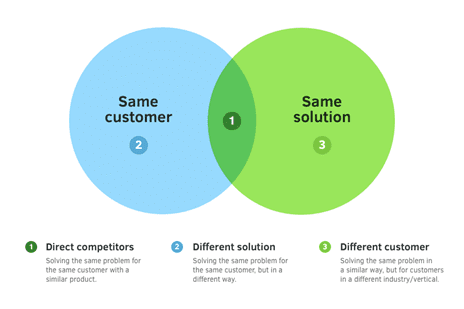Something to consider when trying to build a successful business is finding a product or service that isn’t on the market or hasn’t been properly tapped into. Similarly, you could consider something that’s already available but could be improved. This will give you your point of difference, helping you to stand out from the competition.
While you might be passionate about a particular product or service, if it’s already offered and the consumer’s needs are being met, your business may not be successful.
The first step in working out your point of difference and value proposition is to complete a competitor analysis. This is the process of evaluating your competitors’ companies, products, and marketing strategies.
To ensure your analysis is adding value to your business proposition, it is important to:
- Pick the right competitors to analyse
- Know which aspects of these businesses to analyse
- Know where to find the data, and
- Understand how you can use the insights to improve your own business.
Some may think a competitor analysis is simply a tool for working out what your competitors are doing so that you can do the same thing but better. That is one reason, and sometimes, that works. However, there are other reasons to undertake a competitor analysis. Firstly, it can assist with developing your value proposition and prioritise your product/service development by focusing on aspects of the competitors’ products that customers value. It can also improve your product by capitalising on competitors’ weaknesses and help you to identify benchmarks that will measure your growth. You can also uncover market segments that competitors aren’t servicing and create a new product/service category by identifying gaps between what your competitors offer and what the customers need/want.
The most effective competitor analyses look at a wide range of competitors, not just the ‘main’ ones. Included below is a useful diagram to illustrate the competitors that need to be looked at, based on Myk Pono’s classification of competitors. It identifies three types of competitors: Those that solve the same problem for the same customer with a similar product; those that solve the same problem for the same customer in a different way; and those solve the same problem in a similar way, but for customers in a different industry.

For example, you might say that Airbnb, Stayz, and Booking.com are ‘Different solution’ competitors for the purposes of an analysis because even though booking.com offers a different solution to Airbnb and Stayz, they are still offering accommodation.
Once you’ve found your competitors, you will need to consider what sort of things you want to analyse and how that will help you find a value proposition for your business. Broadly speaking, a competitor analysis should consider the following aspects:
- Business overview/metrics
- Product or service
- Customer and message
- Marketing and positioning
For more information on the above, please contact your local William Buck advisor.






















